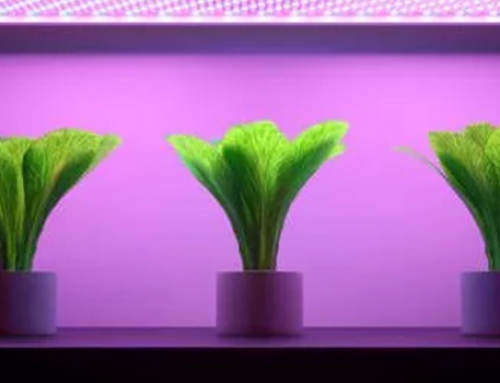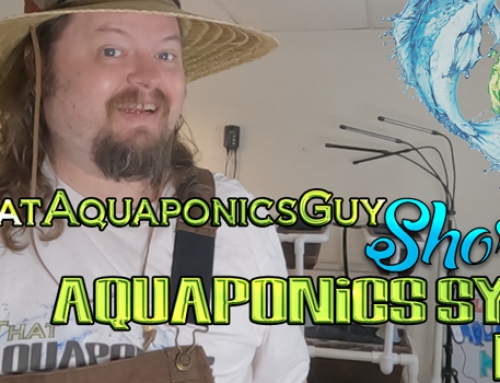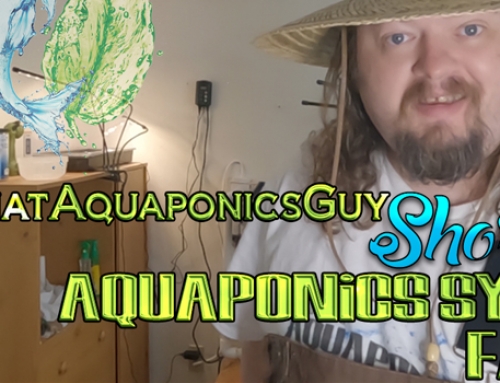Calcium Deficiency In Aquaponics
Calcium is essential for plant growth and strength. Without it, plants may show signs of rot, stunted growth, and could even die. A calcium deficiency is not as common in aquaponics as some other nutrient deficiencies because most tap water contains some amount of calcium. It is still possible for a deficiency to occur, however. Low calcium content in the water you use or the Grow Medium could affect the plants. It is also possible for plants to have trouble absorbing calcium either because of other nutrients or compounds interacting with it or competing for absorption. Regardless of the cause, a calcium deficiency in aquaponics systems can have a serious impact on the health of your plants so identifying a calcium issue and quickly treating it is key.
How Calcium Deficiency Affects Plants
Calcium may be one of the most important nutrients when it comes to the health and strength of the plants in your aquaponics system. Calcium plays a role in several internal functions, but its most important role is providing strength to plant structures just like it does in the human body. Yes, the same nutrient responsible for your strong bones gives the cell walls of plant cells their strength. This is very important in plants that produce fruits and vegetables, as these require new growth cells with adequate strength to grow.
Like other aquaponics plant deficiencies, calcium deficiency causes a variety of problems for your plants. Calcium deficiency symptoms in aquaponics can have a major impact on your plant’s health, growth, and the success of your harvest. Low calcium levels can lead to deformities, tissue death, stunted growth, poor production, and eventual plant death. New growth is often most affected, dying off quickly, becoming mushy, or rotting right on the plant. Lack of calcium is also really bad for root health, resulting in poor growth and lowering the plant’s ability to absorb other nutrients. Additionally, a calcium deficiency can make your plants more susceptible to diseases and pests.
Confirming Calcium Deficiency in Aquaponics
Looking for signs of calcium deficiency in aquaponics systems is the primary method used to determine if there is a problem. Calcium is so essential to plant health and growth that these signs usually show up in plants very quickly and can become severe in a short time. Water testing can also help identify issues with calcium, but this method is more time-consuming and costly. The signs of calcium deficiency in aquaponics are different enough from other deficiencies to make an accurate assumption based on these visual clues alone.
The primary symptom of low calcium is a blackening of the edges or tips of leaves, flowers, fruits or vegetables, and stems. This blackening is caused by necrosis or dying off of these plant tissues. New growth is affected first, as calcium is generally locked into older leaves. It is often referred to as blossom end rot, tip burn, bitter pit, or cavity spots depending on the plant. New leaf growth may also appear deformed, or leaf curling may occur. Calcium deficient plants will also show minimal root growth and may have slimy, discolored, or rotted roots. Fruits and vegetables produced by these plants may be mushy or display discoloration or rotting at the tip or blossom end.
Treating Calcium Deficiency in Aquaponics
To treat a calcium deficiency in your system, you need to act fast. Treatment will require a two-step approach. First, you need to address any issues that could be affecting calcium absorption. Then, you will likely need to supplement with a form of readily available calcium to help your address the deficiency and address any calcium deficiency symptoms in aquaponics plants. To fix issues that might make it difficult for your plants to absorb available calcium from the water, begin by looking into your pH level. Lower pH levels can cause problems with calcium absorption and can even take the form of calcium in your system unavailable to your plants. You should also try to strike a balance between calcium, phosphorus, and nitrogen, as these nutrients can compete with one another. Additionally, watch your sodium levels and change your water if they are too high as this can stop your plants from uptaking calcium.
Supplementing with Calcium:
- If you want to apply directly to the plant … then try using a Calcium Chloride dilution
- If you want to apply in the tank to a low pH system … then try adding small quantities of Hydrated Lime at different locations around the tank
- If you want to apply in the tank to an even lower pH system … then try adding small quantities of Calcium Carbonate at different locations around the tank
Preventing Calcium Deficiency in Aquaponics
After the plants in your system are receiving enough calcium to ensure a return to healthy new growth and strong cell walls, you want to take some preventive measures to prevent a deficiency from occurring again. Preventing future calcium deficiencies in your aquaponics system is a simple process. It involves balancing nutrients, improving your plant’s living conditions, and being prepared to supplement calcium when needed. Calcium interacts with other nutrients in your system, which can make it more difficult for your plants to absorb. Be sure to balance phosphorus and sodium to prevent this issue. Your system’s pH can also be an issue, so keeping pH from dropping too low will also prevent calcium issues. Improving the air circulation to your plants and balancing the humidity in your aquaponic system can also help prevent future issues with calcium and help keep your plants strong. Finally, be prepared to supplement calcium again in the future by keeping some of your chosen calcium additives on hand.






